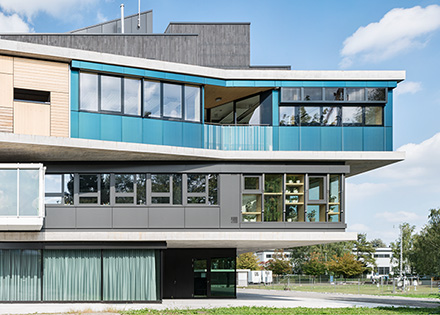SolAce
Even in old-established branches like the heating, ventilating and air conditioning industry there are blank areas: one of these spots is the capture of solar energy and daylight by the building envelope. These topics will be investigated by EPFL Researchers and their industrial partners in the SolAce unit: multi-functional facade technologies will be implemented to achieve an Energy-Plus and Low Carbon combined working/living space.
Among the multi-functional technologies installed on the SolAce facades, colored nanotechnology-based glazing for PV modules and solar thermal collectors will lead to a positive energy balance over the whole year for the unit through the production of solar electricity and domestic hot water. Innovative window integrated micro-structured glazing will provide seasonal dynamic management of solar heat gains.
On the demand side, combining working and living spaces in order to mitigate the treated floor area for indoor activities will significantly reduce the heating and lighting energy intensities of the unit as well as its environmental impact. Advanced building sensing and control technologies fostering human-building interaction will provide a user-centric approach favoring users’ comfort and cognitive performance. Made of prefabricated modular wooden elements and mostly equipped with cardboard-made furniture, the SolAce architectural design is also aiming to foster building materials with low embodied energy and carbon content.
Here you find all publications concerning SolAce.
Radio programme (in French) on RTS 1 CQFD of 11 October 2018










